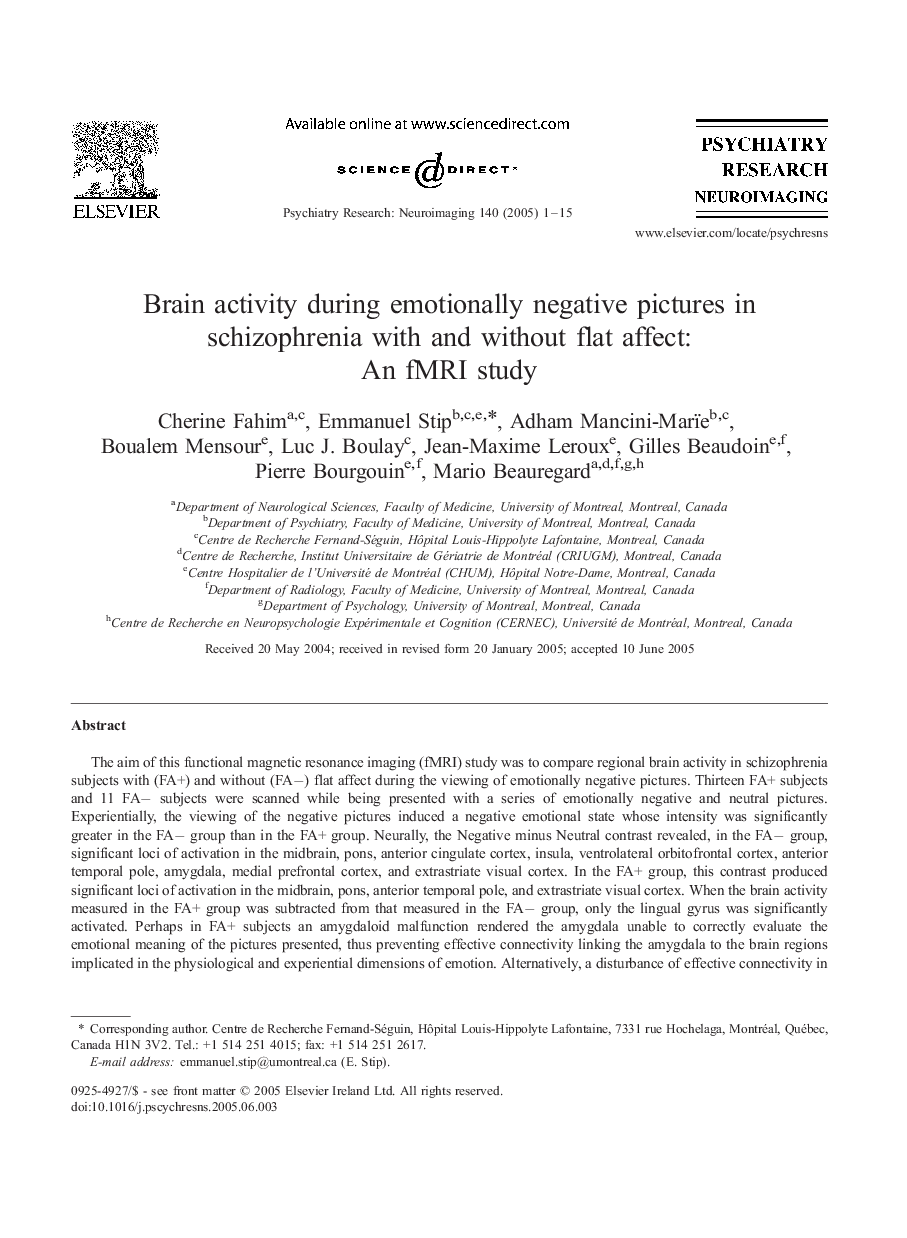| Article ID | Journal | Published Year | Pages | File Type |
|---|---|---|---|---|
| 10305940 | Psychiatry Research: Neuroimaging | 2005 | 15 Pages |
Abstract
The aim of this functional magnetic resonance imaging (fMRI) study was to compare regional brain activity in schizophrenia subjects with (FA+) and without (FAâ) flat affect during the viewing of emotionally negative pictures. Thirteen FA+ subjects and 11 FAâ subjects were scanned while being presented with a series of emotionally negative and neutral pictures. Experientially, the viewing of the negative pictures induced a negative emotional state whose intensity was significantly greater in the FAâ group than in the FA+ group. Neurally, the Negative minus Neutral contrast revealed, in the FAâ group, significant loci of activation in the midbrain, pons, anterior cingulate cortex, insula, ventrolateral orbitofrontal cortex, anterior temporal pole, amygdala, medial prefrontal cortex, and extrastriate visual cortex. In the FA+ group, this contrast produced significant loci of activation in the midbrain, pons, anterior temporal pole, and extrastriate visual cortex. When the brain activity measured in the FA+ group was subtracted from that measured in the FAâ group, only the lingual gyrus was significantly activated. Perhaps in FA+ subjects an amygdaloid malfunction rendered the amygdala unable to correctly evaluate the emotional meaning of the pictures presented, thus preventing effective connectivity linking the amygdala to the brain regions implicated in the physiological and experiential dimensions of emotion. Alternatively, a disturbance of effective connectivity in the neural networks linking the midbrain and the medial prefrontal system may have been responsible for the quasi absence of emotional reaction in FA+ subjects, and the abnormal functioning of the medial prefrontal cortex and anterior cingulate cortex in the FA+ group.
Related Topics
Life Sciences
Neuroscience
Biological Psychiatry
Authors
Cherine Fahim, Emmanuel Stip, Adham Mancini-Marïe, Boualem Mensour, Luc J. Boulay, Jean-Maxime Leroux, Gilles Beaudoin, Pierre Bourgouin, Mario Beauregard,
